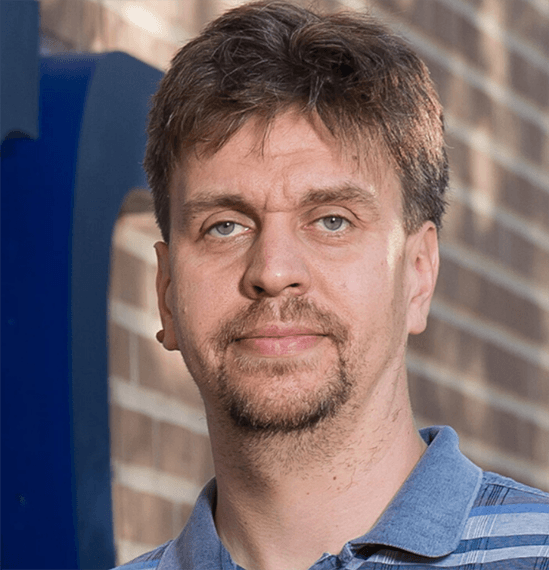Oleg Igoshin specializes in computational systems biology with emphasis on dynamical properties and evolutionary design principles of biochemical networks, pattern formation in bacterial biofilms, and genetic networks in bacterial and stem cell development. Research in Igoshin’s Cellular Systems Dynamics Laboratory uses methods of nonlinear dynamics, biophysics, statistics and bioinformatics to expose emergent properties of biological systems on intercellular and intracellular scales. Igoshin’s computational and theoretical methods complement the experimental approaches of collaborators with leading academic and medical researchers across the U.S., Europe and Australia. Igoshin joined Rice in 2007. From 2012 to present, he has been instrumental in establishing and growing the doctoral program in Systems, Synthetic, and Physical Biology (SSPB). He has also conducted research as a senior investigator with Rice’s Center for Theoretical Biological Physics since 2013. Igoshin is an established leader in systems biology modeling’s research with over 50 journal publications in his name. He was awarded an NSF CAREER award (2009) and a John S. Dunn Research Foundation award (2009). His research into thermodynamic models of combinatorial gene regulation by distant enhancers was selected for an IET Premium Award in Systems Biology (2011). The award is given by the journal’s editorial board members and editors-in-chief who nominate the ‘best paper of the year’ for each journal published by Institute of Engineering and Technology (IET). Igoshin has been serving as an Associate Editor of PLOS Computational biology since 2016.
Research Statement
Ongoing projects in the Igoshin Research Group focus on the:
Modeling of microbiological self-organization: Myxococcus xanthus is one of the most intriguing microbes known for its multicellular lifestyle. Under appropriate conditions, bacterial cells collectively move to self-organize to form complex multicellular structures. The Igoshin Group and their collaborators seek to quantitatively characterize and mechanistically understand self-organization and pattern formation M. xanthus and other bacteria. Complementary to traditional experimental research, the Igoshin Group uses computational biophysics and engineering approaches to build mathematical models of these phenomena.
Noise and feedback regulation in bacterial genetic networks: Transcriptional feedbacks are abundant in bacterial gene regulation, but their physiological role is not always well understood. The Igoshin Group investigates the role transcriptional feedback plays in shaping signal response and the characteristics of master-level regulators of bacterial gene expression. The Igoshin Group focuses on major classes of bacterial signaling systems – two-component signal transduction cascades and networks regulating activity of the alternative sigma factors. In particular, the research aims to uncover the stochastic nature of these processes, which allows isogenic bacteria to achieve different responses in identical environmental conditions.
Feedback architectures of transcriptional regulation in hematopoietic stem cells: Transcriptional regulation of multipotent mammalian stem-cell lines is significantly more complex than bacterial regulation and therefore contains more complicated functional network motifs. The Igoshin Group uses mathematical modeling to study how the architecture of these motifs affects their physiological function.
Trade-offs in non-equilibrium biochemical information processing: Ability of biochemical enzymes and their underlying networks to read and propagate molecular information is key to the complexity of life. However, thermal and molecular copy-number fluctuations place fundamental chemical constraints on the precision of this information processing. The Igoshin group is using kinetic and statistical physics approaches to understand how the mechanisms and free energy landscapes of the enzymes evolved to optimize speed-accuracy-dissipation trade-offs in their regulatory processes. These methods are applied to understand transcription regulation, replication, protein translation, chromatin dynamics, and Cas9 DNA cleavage.

